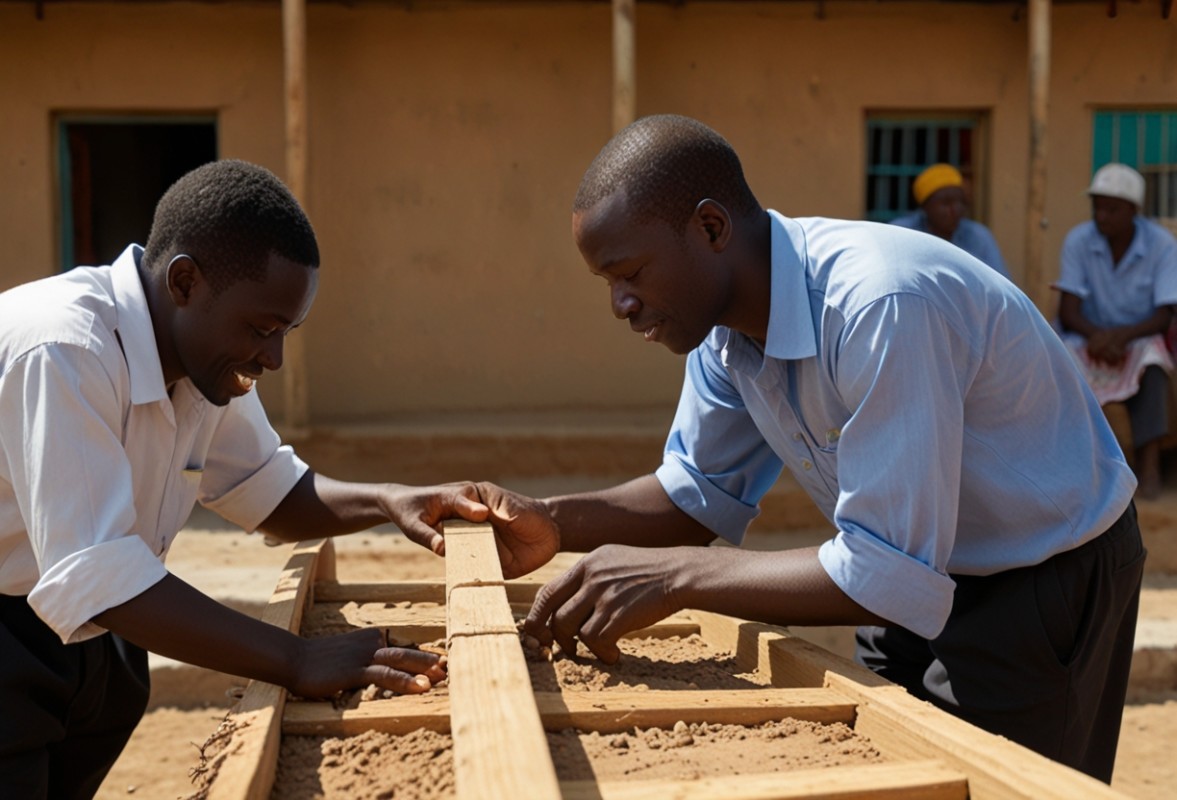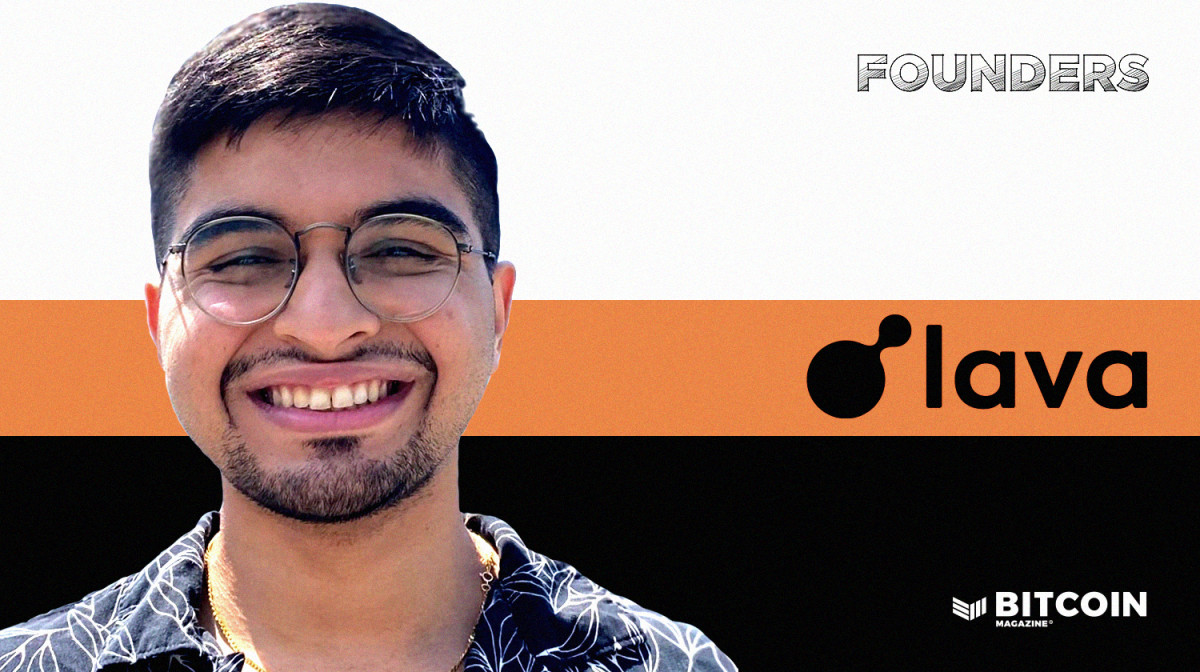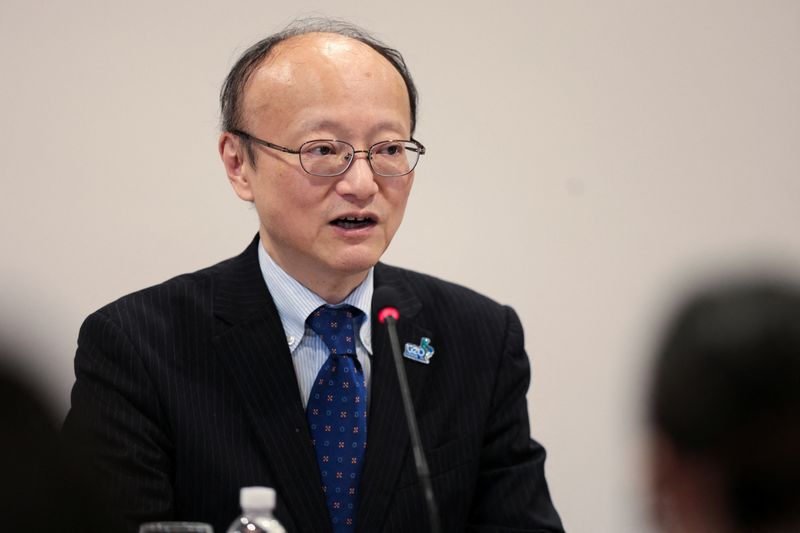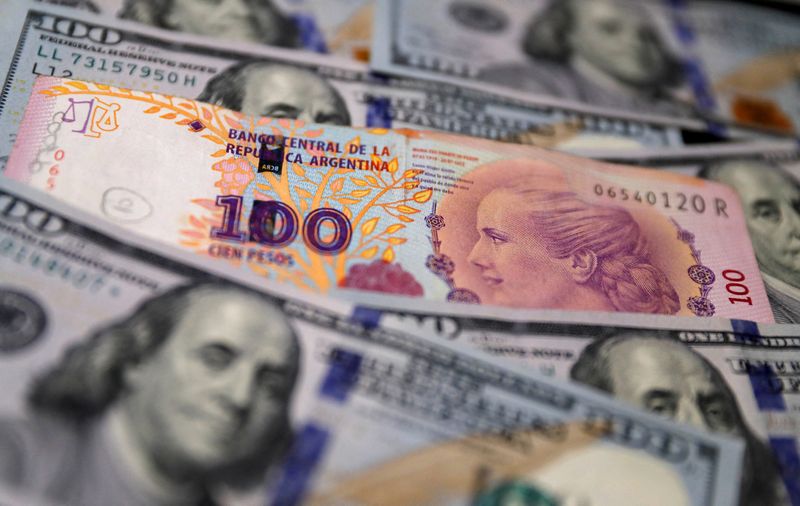Month: July 2024
Yen surges on possible intervention, sterling hits one-year high
Post Content
A Zero-Knowledge Proof Is Verified on Bitcoin For The First Time in History
Earlier this year, Weikeng Chen and his partners at venture firm L2 Iterative decided to shift their attention to the bubbling Bitcoin ecosystem. Chen, a Chinese native, had taken notice of the growing interest in Bitcoin development from several large actors in the mining space who started backing different projects in the Ordinals and layer 2 space.
“I never really realized Bitcoin had a development community,” he says, half-joking.
Fast forward to last week, an open-source initiative led by himself, with sponsorship from infrastructure company Starkware, has achieved the first implementation of a zero-knowledge verifier using Bitcoin script.
In an industry where significant breakthroughs are few and far between, those involved in the effort are gushing about the significance of this milestone. Zero-knowledge proofs, they argue, are the key to unlocking Bitcoin’s programmability and scaling its use globally.
Behind this achievement is the remarkable journey of an outsider who picked up Bitcoin development just six months ago and has now coded arguably its most advanced piece of software. I interviewed Weikeng Chen to delve into his motivations, his collaboration with Starkware around OP_CAT and STARKs, and his perspectives on this new era of Bitcoin development.
Starting from scratch
A PHD graduate from UC Berkeley with a specialization in cryptography, Chen explained he began seeking an opportunity to contribute his technical skills to the industry to better position his firm with potential investors and companies. Despite his extensive engineering experience, he quickly realized that resources were scarce and the learning curve was steep. “A lot of the material out there is outdated and does not reflect the current state of development.” His affinity for zero-knowledge technology eventually led his research to focus on Bitcoin’s ability to perform the computations required for verifying zero-knowledge proofs.
As one rabbit hole led to another, Robin Linus’ work on the novel computing paradigm of BitVM came onto his radar. Interested in the potential of using fraud proofs to implement zero-knowledge systems compatible with Bitcoin, he started poking around the white paper and noticed some issues with some of the concepts involved in the system. “I sent a message to Robin asking a few questions about BitVM. My understanding of BitVM from that whitepaper was indeed dead wrong. I remember Robin’s first reaction was to ask me who had told me this,” he recalls laughing. This interaction sparked a brief but productive collaboration between Chen, Linus, and other researchers as they iterated on the original idea and looked for ways to optimize it.
“It was obvious to me that this method could be used to verify zero-knowledge proof so my work quickly went in the direction of implementing a SNARK verifier.”
A verifier is a cryptographic tool that enables the verification of zero-knowledge proofs on the Bitcoin network.
The OP_CAT opportunity
Around the same time, a team at zero-knowledge industry giant Starkware was paying close attention to the emerging activity coming out of the Bitcoin community. For some, it was a long time coming. Starkware founder Eli Ben-Sasson was arguably the first person to discuss zero-knowledge technology in the context of cryptocurrencies at an early Bitcoin conference. Almost a decade later, Starkware’s research and ZK-STARK technology serve as the foundation of a growing number of applications in the space.
“Back in 2013, when I suggested using validity proofs to scale Bitcoin, I was hoping Satoshi might still be around and would make it happen faster. Thanks to cryptography visionaries like Weikeng Chen and Bitcoin OP_CAT researchers like Andrew Poelstra and Ethan Heilman, my 11-year old dream feels now within reach,” Ben-Sasson commented.
Last month, the company announced they were beginning the deployment of numerous initiatives focused on closing the technology gap between Bitcoin and zero-knowledge proofs. A $1,000,000 application grant was offered towards research and exploration into the potential of the OP_CAT soft fork proposal.
The announcement was marked by notable enthusiasm, leaving some to wonder what was driving this optimism. Until recently, the prospects of zero-knowledge technology on Bitcoin had been mostly an afterthought — another OP code that might never see the light of day. Indeed, the difficulty of getting consensus over smaller changes to the Bitcoin codebase made it seem unlikely something more complex would ever come to pass.
Based on conversations with Starkware contributors, it was around May when they caught wind of Weikeng’s progress on BitVM and the mood shifted dramatically. As it would turn out, the developer had already set his sights on the company’s Circle STARKs technology. In a paper released a couple of months ago, Chen had already identified the latter as a “Bitcoin-friendly proof system.”
After some back and forth, both parties agreed to come together and stand up a joint effort dedicated to an open-source implementation of a STARK verifier using the OP_CAT primitive. “I knew it could be done. We just needed to put all the pieces together,” suggests Chen. The “Bitcoin Wildlife Sanctuary” was born.
Two months later, the project appears to have reached its goal thanks to the collaboration of other developers like Pingzhou Yuan, another early BitVM contributor. Late morning last Friday, Chen jumped into the project’s Telegram group to break the news to other participants: “I think I finished the job!”
Following successful local tests, the developer broadcasted a series of transactions to Bitcoin’s Signet testnet network that would execute the entire script. To optimize on-chain usage, the STARK proof, based on Starkware’s open-source Stwo implementation, is split into concurrent transactions chained together using an OP_CAT based covenant.
At 6:29AM on July 12, 2024, the final transaction was confirmed on the Signet network, signaling what proponents believe could be the beginning of a new era of development on Bitcoin.
“This was a tremendous effort and took a significant amount of time,” said Chen. “We started with nothing. There’s no information about ZK proofs on Bitcoin. There’s no information regarding the mathematical operations to follow. We had to build the full stack, which eventually led to the implementation of the STARK verifier.”
Inspiring a new development path
While the results deserve to be celebrated, Chen is insistent the job is not done. Asked if he was optimistic about his work creating the foundation for new scaling protocols like rollups on Bitcoin, the developer was quick to tamper expectations.
“The idea roughly works but the proof-of-concept is not production-ready. Validity proofs also take a lot of block space which might turn out to be expensive in the future.”
Contributors at Starkware acknowledge the challenges ahead but are confident the success of the project represents “a monumental leap forward” towards Bitcoin scaling solutions that can leverage their ZK rollup technology.
One thing is for sure, the collaboration is likely to further strengthen arguments in favor of a potential OP_CAT soft fork. In order to put together the verifier implementation, Chen says he had to develop a reliable framework for covenants using CAT which can serve to highlight the versatility of the script improvement proposal. He believes other developers in the ecosystem can play with his code and come to the same conclusion he did regarding its benefits.
“I don’t think there is a lot of risk once we have developed best practices. There are not that many places where this is going to go wrong. We now have a clear demonstration that OP_CAT can be adapted to various covenant projects in a safe way.”
When questioned about his intention to contribute to a future activation process, the developer readily admits he is not familiar enough yet with all of the dynamics around Bitcoin open-source development. Next, he intends to share his progress with members of the development mailing list and hopes others will be able to contribute review, and provide feedback on his work.
Reflecting on his experience so far, Chen immediately points out the importance of creating a fertile environment for new developers entering the ecosystem. He believes many talented developers are passing on the opportunity to build on Bitcoin because of the lack of a cohesive vision.
“There is not a clear sense of direction right now which leaves contributors perplexed about their ability to impact the future. Hopefully, the emergence of new tools and primitives can improve this situation so Bitcoiners are allowed to dream again.”
Bitcoin Magazine And Look Into Bitcoin Partner To Launch Enhanced Bitcoin Magazine Pro
Bitcoin Magazine is thrilled to announce the launch of the newly enhanced Bitcoin Magazine Pro in partnership with Look Into Bitcoin. This strategic collaboration involves rebranding Look Into Bitcoin and relaunching it as Bitcoin Magazine Pro, bringing real-time data and market-leading chart intelligence to users while significantly enhancing the capabilities and reach of Bitcoin Magazine Pro.
“I’m thrilled to partner with the Bitcoin Magazine team, whom I’ve long admired, to build on the success that Look Into Bitcoin has achieved since its launch in 2019,” said Philip Swift, Founder and CEO of Look Into Bitcoin and now Managing Director of Bitcoin Magazine Pro. “Bitcoin Magazine Pro now goes beyond news information to provide all the relevant tools you need for Bitcoin investing: on-chain charts, macro data, bespoke chart alerts, and Tradingview scripts for real-time analysis that, when combined, give our users a huge edge in the market. Together, we’re ready to create incredible value for the Bitcoin Magazine Pro community.”
Prior to this partnership, Bitcoin Magazine Pro was the leading top-ranked Bitcoin-only newsletter on the Substack platform, publishing in-depth research on Bitcoin and traditional financial markets. This new partnership will significantly elevate the user experience by providing a comprehensive suite of Bitcoin on-chain and macro charts, advanced charting tools, and market-leading analysis.
The Bitcoin Magazine Pro platform now offers a wide range of features and services, including:
Real-time Bitcoin charts and data: Stay updated with the latest market trends and movements.Advanced charting tools: Analyze the market with sophisticated charting tools.In-depth market analysis: Gain insights from regular expert videos and reports.Educational resources: Access a wealth of information on Bitcoin and blockchain technology.Customizable chart alerts and notifications: Set up alerts so you never miss a thing!
Click here to start your free trial
Mark Mason, International Publisher at Bitcoin Magazine, also commented on the partnership, stating, “It’s been an absolute delight to partner with Philip. As Bitcoin achieves more mainstream adoption and recognition, the need for real-time data insights and cutting-edge market intelligence analysis becomes more critical. This partnership will be integrated to support and complement all existing and future distribution channels, implementing Bitcoin Magazine Pro charts and data across our online, print, social, video, and events channels.”
To celebrate the launch of this partnership, users can receive a free 30-day trial of the new and improved Bitcoin Magazine Pro platform for a limited time. This trial provides full access to all the features and services, allowing users to experience the enhanced platform firsthand.
“This partnership will enable millions of people worldwide to make informed, data-driven decisions about Bitcoin,” Swift continued. “Stay tuned – the future of Bitcoin analysis just got brighter!”
For more information and to start your free trial, visit the Bitcoin Magazine Pro website here.
NoOnes Bitcoin Philosophy: Everyone Eats
I like to eat. What I mean by that is I like to make money. I’ve had my share of being hungry and eating two-minute noodles because I couldn’t afford anything else. That’s no fun, but it’s the reality for a lot of people in the Global South. It’s a reality that NoOnes plans to change.
I want to make a lot of money, and I’m not ashamed to say so. Being really rich would be great, but it wouldn’t feel good if everyone around me was poor. It wouldn’t even feel good if they were moderately successful. The only way it would feel good is if everyone around me is rich, too. That’s the reason one of our values at NoOnes is “everyone eats,” and it’s so important I’ve made it part of our business model.
There is hunger at NoOnes, but it’s a hunger to make sure we are doing everything we can to make sure everyone eats. It started with our pledge to give back 50% of the company’s profits. You can’t take that promise to the bank – because who’d trust them? – but you can look at my record and ask yourself if I’m serious about it.
Ever since I joined the dots about the financial system and realized how it suppresses people who have no power, especially those in the Global South, I’ve made it my mission to help create a new system. There have been many roadblocks put in my way, but I’m positive we can create a new financial ecosystem, and that’s why I get up every morning. I’m making a choice, and I’m lucky enough to be able to make it because I have a skill-set that empowers me to get the job done.
My vision of a Global South where everyone eats would already have happened if we hadn’t been held back by the disastrous policies of the World Bank (WB) and the International Monetary Fund (IMF) after decolonization. I say decolonization, but the truth is that military regimes have merely been replaced with economic ones. Now, we have the tools necessary for us to go to work and defeat that system to give us something better.
We’re already doing a lot of things at NoOnes, such as our Partner Program and cash back to reward the customers who help us to grow. For example, our users are our greatest ambassadors, so we give them jobs to help with our education programs online and on the ground. All of these initiatives are part of our “everyone eats” mantra but there is so much more to come.
Everyone eats is much more than giving back financially. The vision we’re driving towards is really a new financial architecture, an ecosystem where everything is about incentivizing people to work. We are already doing that by creating jobs – having our citizens generate content to onboard people into crypto, such as showing others how to make money, making educational videos about how to buy or trade Bitcoin, or talking to groups in person and online. The best part of all of this is that it’s organic and circular, a constant loop that keeps feeding into the system.
Crypto users across Africa are learning how to use what we’ve built and they’re building layers on top of it. They are hacking it in ways we’ve never imagined, and then putting back what they learned into the ecosystem by teaching others. This is how everyone gets a place at the table and a plate in front of them with some food on it.
We want everyone to grow, so our goal is to expand this ecosystem, to make it a truly people-powered, trustless, completely transparent tool that will transform the Global South into a powerhouse. This “everyone eats” philosophy flips the whole western corporate model on its head. Instead of blocking the potential of millions across the Global South, our model is designed to be generative, to build – and it works.
Years ago, when I first began talking to potential users in Africas about Bitcoin online, I tried to onboard many people by giving away BTC because I knew my investment would be returned to me. I went further when I founded the Built with Bitcoin Foundation and built 13 schools in the Global South to help educate local people. We were on the ground showing people how a peer-to-peer marketplace using Bitcoin as a universal container for money could not only lift them up, but transform the livelihoods of future generations to come.
“Everyone eats” means we all have food, we have a great place to live, and we all have work – but it also means we have free time, and we are going to show the world that this model works. As a P2P platform, we must make profits because we can’t advocate for an equitable society without resources. However, it’s absolutely essential we’re not obsessive about profits, except to the extent that we can feed it back into the ecosystem to generate more growth.
We want ordinary people to understand they have so many opportunities to grow, despite the obstacles in front of them, a lack of education, resources, or the “right” nationality. I was just some nerd from an immigrant family who failed a lot of times until I learned how to succeed. Now I’m trying to give my brothers and sisters in the Global South a short-cut to prosperity. If that means I have to give away 50% of our revenue to make sure everyone eats, I will do it. We need profits, but we are people-driven, and that’s what makes NoOnes so special. The task now is to spread the word.
This is a guest post by Ray Youssef. Opinions expressed are entirely their own and do not necessarily reflect those of BTC Inc or Bitcoin Magazine.
Seedless Keys And DLCs: How Lava Is Making Bitcoin Custody Easy
Company Name: Lava
Founders: Shehzan Maredia
Date Founded: January 2022
Location of Headquarters: New York, USA (with some remote employees)
Amount of Bitcoin Held in Treasury: N/A
Number of Employees: 7
Website: https://www.lava.xyz/
Public or Private? Private
Shehzan Maredia wants to make custodying Bitcoin easy.
This is why he founded Lava, an app that he and his team have created that allows users to purchase bitcoin, transact with both bitcoin and stablecoins globally and now hold their bitcoin in self-custody without having to write down a seed phrase.
Maredia is one of a growing list of entrepreneurs in the Bitcoin space who believes that seed phrases — lists of 12 to 24 words used to recover funds from lost or stolen cryptocurrency wallets — are hindering mainstream adoption of bitcoin. He thinks that seedless alternatives to self-custody will help onboard the masses.
“I realized that seed phrases were a big barrier to adoption,” Maredia told Bitcoin Magazine, “and I went down the rabbit hole [to make] something better.”
After months of R&D, Maredia developed a solution that’s now at the heart of the design of the Lava app: Lava Vault.
Lava Vault
After testing a number of different self-custody setups, Maredia and his team arrived at a unique multisignature solution that became the backbone of the Lava Vault.
“We built this two-of-two recovery solution for self-custody where you can attach one part of the two-of-two to your cloud account and the other is a four digit PIN,” he explained.
Introducing the Lava Vault, the best self-custody app for people who want to save in bitcoin and spend in dollars without compromising on security.
free, instant, global payments
buy bitcoin with lowest fees available
secure your assets with seedless, 2-of-2 recovery pic.twitter.com/nEIYIHD6Dg
— lava (@lava_xyz) July 16, 2024
“If I have your four digit PIN, I can’t steal your money because I don’t have access to your cloud account. If I have access to your cloud account, I don’t have your four digit PIN, and I can’t brute force it,” he added.
Maredia and the team at Lava call this design the Lava Smart Key, and they believe that it’s helping to provide simpler self-custody for those who otherwise might not want to take on the responsibility.
“We’ve actually seen a bunch of people using it that previously would have just bought bitcoin and kept it on Coinbase,” he said.
What is more, Lava Vault works seamlessly with Lava Exchange, another product Lava recently rolled out.
Lava Vault + Lava Exchange = Auto-Onboarding To Self-Custody
It’s often challenging for new Bitcoin users to tell the difference between a custodial wallet that an exchange provides and a self-custody wallet. It can be overwhelming for someone new to Bitcoin to go through the process of moving their bitcoins from an exchange wallet into self-custodial wallet, especially if the exchange offers both (e.g., Coinbase).
Lava removes this difficulty, though, as it allows users to purchase bitcoin within the app — at the best rate available — before automatically sending that bitcoin into self-custody.
“We have this exchange aggregator we’ve built,” said Maredia.
“If you want to buy bitcoin today, you have to figure out which exchange — Kraken, Coinbase. So, we work with a lot of them. We know what price they offer you based on your order, and we just route you to the best exchange through Lava,” he added.
Once users make their purchase, the bitcoin shows up in their Lava Vault.
“This is super useful if I’m trying to onboard users to self-custody,” said Maredia. “Now, I can tell them to download directly to self-custody, which largely increases the likelihood that they will continue to use self-custody.”
Once users have their bitcoin or stablecoins in self-custody via Lava, they can use either asset to make transactions permissionlessly with anyone in the world. And soon they will also be able to borrow dollars against their bitcoin without having to turn their bitcoin over to a third party.
Lava Loans
Maredia and the Lava team recently released a beta version of a new product called Lava Loans, which Maredia describes as a “self-custodial version of BlockFi.”
BlockFi, now defunct, was a platform that allowed users to use bitcoin as collateral for a loan. The main difference between a platform like BlockFi and Lava is that users had to give up custody of their bitcoin to BlockFi to use the service.
“Lava Loans is the first way to borrow against your bitcoin without giving it to a custodian or bridge,” said Maredia.
Maredia created this product because he both saw the demand for it and wanted something like this for himself.
“There’s a lot of Bitcoiners who don’t want to sell their bitcoin,” shared Maredia.
“I don’t want to sell my bitcoin either, because it’s appreciating. I’d rather borrow against it at a lower interest rate than it’s appreciating,” he added.
He also noticed that the other methods of borrowing against one’s bitcoin are both highly inefficient and expensive.
“There are billions of dollars of bitcoin-secured loans happening with custodians or with Wrapped Bitcoin (WBTC),” he explained.
“To get Wrapped Bitocin, you have to take your Bitcoin, KYC yourself, put it on an exchange, pay fees to mint it, pay a bunch of network fees to move it onto Ethereum and then once you’re done using Wrapped Bitcoin, move it back to your exchange, pay extra fees to unwrap your Bitcoin and move it back to self-custody. And you probably have tax obligations for wrapping your Bitcoin, too,” he added.
“I want to get these people using native bitcoin. We can increase the market size of people who are using actual bitcoin as collateral.”
Discreet Log Contracts (DLCs)
Lava Loans employs a specific type of smart contract on Bitcoin called Discreet Log Contracts (DLCs).
Maredia explained that DLCs are safer than the types of smart contracts often deployed on other major crypto networks.
“DLCs are interesting because you’re basically just using the Bitcoin layer one to lock your Bitcoin and release it under some predefined set of conditions,” he explained.
“[As opposed to] smart contracts on Ethereum or Solana that constantly keep getting hacked, DLCs are basically a bunch of pre-signed transactions that you encrypt. You almost get formal verification of your system by default, because you know that the money that’s locked in the smart contract between you and your counterparty can only be moved under this predefined set of conditions that you have verified,” he added.
“So, there’s a lot less technical risk versus writing arbitrary code deployed on the EVM that anyone can poke around with and exploit.”
Maredia also shared that the Lava team is composed of a number of engineers who contributed to early DLC standards.
“There’s probably like 10 people, a lot of which work at and contribute to Lava right now, who know about this tech,” explained Maredia, who also shared that the potential of DLCs has yet to be fully realized largely because of how new the technology is. “Not too many people know about [DLCs, but] that’s because the tech is early and we’re building it.”
Move Slowly And Safeguard Things
Unlike many in the crypto and broader tech space who take the “Move fast and break things” approach, Maredia and his team are analytical and thorough. They prefer to conduct research and test products rigorously before bringing them to market.
“We’ve been doing a lot of R&D over the last two years,” said Maredia.
“We were experimenting with lots of things. Even before we built Lava Smart Key, Lava Exchange and Lava Loans, we had been experimenting with a lot of different ways to do loans, to do self-custody security and to do on-ramp and off-ramp,” he added.
“This new self-custody security solution is a product of the last eight to ten months of experimentation.”
Maredia added that while Lava Loans is likely months away from going live, the beta version of the product has been functioning well and providing he and his team with important feedback.
“Everything’s coming together,” he concluded.
Lava is a portfolio company of UTXO Management, a regulated capital allocator focused on the digital assets industry. Bitcoin Magazine is owned by BTC Inc., which operates UTXO Management. UTXO invests in a variety of Bitcoin businesses, and maintains significant holdings in digital assets.
UBS raises EUR/USD forecast amid US data and Fed rate cut prospects
Post Content
Sterling needs more than higher UK rates to stay in the fast lane
Post Content
Dollar slips, while yen soars on intervention talk, sterling gains after UK CPI
Post Content
Japan’s Kanda says officials need to respond if speculators cause excessive FX moves, Kyodo reports
Post Content
Argentina’s parallel peso strengthens on new economic measures, stock index plummets
Post Content








